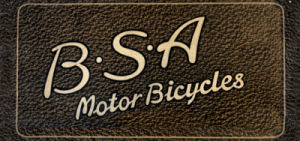



Several new 493cc machines were introduced in 1929. The Standard S29 clearly shows its origins.
This is a dual-purpose machine which has all the desirable qualities of a first-class solo machine, and will give excellent service when used with a sidecar. This machine can be supplied fitted with a special sports engine, steering damper, knee-grips, etc., at an extra charge, but these items cannot be supplied separately.
Engine.
Single cylinder, 4.93 h.p., 80 mm. x 98 mm. bore and stroke (493 c.c.). Roller big-end. bearing. The mainshaft is mounted on large ball bearings. Aluminium alloy piston; silent timing gear. Large silencer giving subdued note without loss of efficiency.
Carburettor and Magneto. Amac. A special carburettor fitted with air cleaner as an extra. The magneto is driven by adjustable chains in aluminium dustproof case.
Lubrication.
Gravity feed to mechanical pump, then to sight feed on timing case, and feeding to crankcase. A hand pump is also fitted for emergency use. Oil is supplied to the primary chain by depressing a spring by-pass valve on sight feed. Hubs, fork links, etc., fitted with grease-gun nipples.
Transmission.
Front chain, ½ in. x .305 in. ; rear chain, 5/8 in. x ¼ in. Front drive enclosed in two-part chain case, and rear drive protected by an efficient guard. Cam-faced cush drive fitted to engine shaft. For gear ratios see page 69.[1]
Clutch. Contained in a large chain wheel, and of the floating dry-plate type. Controlled by lever on left of handlebar, with large diameter cable.
Gear-box.
B.S.A. Three-speed. All gears constantly in mesh and increased in width to give additional strength. The kick-starter mechanism is enclosed in gear-box. Inclined change-speed lever on right side of tank.
Forks and Frame.
Designed to give low riding position, and constructed of weldless steel tubing and forged steel lugs throughout. Head lug of continuous type giving great strength. Pitted with special lugs to take B.S.A. sidecars. Strong carrier fitted.
Handlebar.
Adjustable, mounted behind steering bead, with forward bend at centre and back sweep at ends. Reversible for sports use. Long rubber grips.
Tank.
Tapered type, supported by brackets brazed to frame. Filler caps, unleakable, secured with bayonet joint and chain. Combined priming and petrol tap. Capacity: petrol, 3½ gals. ; oil, 3½ pints.
Wheels and Tyres.
Wheels: heavy gauge rims, 21 in. x 2¼ in., enamelled. Taper roller hearings to rear hub. 27 in. x 2.75 in. wired-on Dunlop cord, or 26 in. x 3.25 in. wired-on tyres with special front guard extra.
Brakes.
Both internal expanding type. Front, 5½ in. diameter, operated by lever on right handlebar. Rear, 7 in. diameter, operated by toe pedal on independent fulcrum on right side of machine. Grease-gun nipples fitted to cam spindles.
Saddle.
Terry spring seat. Brooks supple seat B.189/1, if specified.
Mudguards.
Rear, 6 in. wide, of plain section ; front with side wings and splash attachment.
Footrests and Stands.
Adjustable. Back kick-up, Front stand rigidly secured to guard.
Notes
1. More pages from this book are available at Craig Howell's Flickr pages. Craig Howell
Source: Book of the BSA by Waysider. Pitmans, 1928.